
物理化学简明双语教程:英汉对照(第二版)9787511475220
正版图书,可开发票,请放心购买。
¥ 33.58 7.5折 ¥ 45 全新
库存2件
广东广州
认证卖家担保交易快速发货售后保障
作者编者:何美//李文泽//张潇飒//周华锋|
出版社中国石化
ISBN9787511475220
出版时间2024-06
装帧其他
开本其他
定价45元
货号32121836
上书时间2024-07-28
- 店主推荐
- 最新上架
商品详情
- 品相描述:全新
- 商品描述
-
作者简介
何美,工学博士。现为沈阳化工大学理学院副教授。自1999年以来一直从事《物理化学》和《结构化学》的教学与研究工作。主讲本科生的《物理化学》(省精品课、省一流课)、《物理化学实验》(省一流课),教学过程采用双语授课。主编、参编教材5部。
李文泽,博士,沈阳化工大学教授,硕士生导师,东北大学兼职博士生导师。辽宁省稀土化学及应用重点实验室科研团队负责人。沈阳化工大学理学院副院长,沈阳化工大学基础化学实验教学中心主任,辽宁省化工学会理事,辽宁省优秀教师。
目录
CONTENTS
Introduction(1)
0.1Physical chemistry(1)
0.1.1Contents of physical chemistry(1)
0.1.2Issues to be solved by physical chemistry(1)
0.1.3Advice for studying physical chemistry(2)
0.2Indication and operation of physical quantity(3)
0.2.1Indication of physical quantity(3)
0.2.2Operation of physical quantity(3)
Chapter 1The pVT properties of gases(4)
1.1State equation of the perfect gas(4)
1.1.1Empirical law of gas(4)
1.1.2State equation of the perfect gas(5)
1.1.3Model of the perfect gas(6)
1.2Mixture of the perfect gas(6)
1.2.1Composition of perfect gas mixture(6)
1.2.2Daltons law of partial pressures(7)
1.2.3Amagats law of partial volumes(8)
1.2.4Mean molar mass of mixed gas(8)
1.3Liquefaction of real gas and critical properties(9)
1.3.1Saturated vapor pressure of liquid(9)
1.3.2Liquefaction of real gas and critical properties(9)
1.4State equations of real gas(10)
1.4.1The van der Waals equation(10)
1.4.2The virial equation of state(11)
1.5The law of corresponding states(11)
1.5.1Compression factors(11)
1.5.2The law of corresponding states(12)
EXERCISES(12)
Chapter 2The first law of thermodynamics(14)
2.1The basic concept of thermodynamics(14)
2.1.1System and surroundings(14)
2.1.2Extensive property and intensive property of system(15)
2.1.3State and state function of system(15)
2.1.4Equilibrium state of thermodynamics(16)
2.1.5Process and path(16)
2.2The first law of thermodynamics(17)
2.2.1Heat(18)
2.2.2Work(18)
2.2.3Calculation of volume work(19)
2.2.4Thermodynamic energy(20)
2.2.5The first law of thermodynamics(21)
2.3The heat at constant volume, the heat at constant pressure and enthalpy(22)
2.3.1The heat at constant volume(22)
2.3.2The heat at constant pressure(22)
2.3.3Enthalpy(22)
2.3.4Hesss Law(23)
2.4Heat capacity(24)
2.4.1Heat capacity(24)
2.4.2Relation between Cp, m and p(25)
2.4.3Empirical formula between Cp, m and T(25)
2.4.4Relation between Cp, m and CV, m(25)
2.4.5Joule experiment(26)
2.5Reversible process and equation of adiabatic reversible process of the perfect gas(29)
2.5.1Reversible process(29)
2.5.2Isothermal reversible process of the perfect gas(29)
2.5.3Adiabatic reversible process of the perfect gas(30)
2.6Phase transformation process(33)
2.6.1Phase and enthalpy of phase transition(33)
2.6.2Calculation of ΔH of phase transformation process(33)
2.7Standard molar enthalpy of reaction(35)
2.7.1Chemical stoichiometric number(35)
2.7.2Extent of a reaction(35)
2.7.3Molar enthalpy of reaction(36)
2.7.4Standard molar enthalpy of reaction(36)
2.8Standard molar enthalpy of formation and standard molar enthalpy of combustion(37)
2.8.1Standard molar enthalpy of formation(37)
2.8.2Standard molar enthalpy of combustion(38)
2.8.3The temperature—dependence of ΔrHm(T)—Kirchhoffs formula(39)
2.8.4The relation between Qp and QV(40)
2.8.5Maximum temperature of explosion and flame reaction(40)
2.9Throttling process and JouleThomson effect(41)
2.9.1JouleThomson experiment(41)
2.9.2Experiment result(41)
2.9.3Result analysis(41)
2.9.4Characteristics of throttling process(42)
2.9.5JouleThomson coefficient(42)
EXERCISES(42)
Chapter 3The second law of thermodynamics(45)
3.1Carnot cycle(45)
3.1.1Efficiency of heat engine(45)
3.1.2Carnot cycle(46)
3.1.3Carnot theorem(47)
3.2The second law of thermodynamics(48)
3.2.1Spontaneous process(48)
3.2.2Statements of the second law of thermodynamics(48)
3.2.3Essence of the second law of thermodynamics(49)
3.3Entropy and the principle of the increase of entropy(49)
3.3.1Entropy(49)
3.3.2Clausius inequality(50)
3.3.3The principle of the increase of entropy and entropy criterion of equilibrium(50)
3.4Calculation of entropy change of system(52)
3.4.1Calculation of ΔS of system in simple pVT process(52)
3.4.2Calculation of ΔS in phase transformation process(57)
3.5The Third law of thermodynamics and calculation of the entropy change of reaction(59)
3.5.1The Third law of thermodynamics(59)
3.5.2Conventional molar entropy and standard molar entropy(60)
3.5.3Calculation of ΔrSm(T)(60)
3.6Helmholtz function and Gibbs function(61)
3.6.1Helmholtz function(61)
3.6.2Helmholtz function criterion(61)
3.6.3Gibbs function(62)
3.6.4Gibbs function criterion(62)
3.7Calculation of ΔA and ΔG(63)
3.7.1Simple pVT change process(63)
3.7.2Phase transformation process(64)
3.7.3Chemical change process(65)
3.8The fundamental equation of thermodynamics(67)
3.8.1The fundamental equation of thermodynamics(67)
3.8.2The relation of characteristic function(67)
3.8.3Gibbs-Helmholtz equation(68)
3.8.4Maxwells relations(68)
3.8.5Thermodynamic equation of state(69)
3.9Clapeyron equation(71)
3.9.1Condition for phase equilibrium of onecomponent system(71)
3.9.2Clapeyron equation(72)
3.9.3ClausiusClapeyron equation(72)
EXERCISES(75)
Chapter 4The thermodynamics of multicomponent systems(78)
4.1Mixture and solution(78)
4.1.1Composition scale of mixture(78)
4.1.2Composition scale of solute B in solution(79)
4.2Partial molar quantities(80)
4.2.1Definition of partial molar quantity(81)
4.2.2Collected formula of partial molar quantity(81)
4.2.3GibbsDuhem equation(82)
4.2.4Relations among different partial molar quantities(82)
4.3Chemical potential(83)
4.3.1Definition of chemical potential(83)
4.3.2Thermodynamic fundamental equation of multicomponent homogeneous system changing of composition(83)
4.3.3Equilibrium criterion of material(84)
4.4Chemical potential of gas and fugacity(85)
4.4.1Expression of chemical potential of perfect gas(85)
4.4.2Expression of chemical potential of real gas and fugacity(86)
4.5Raoults Law and Henrys Law(87)
4.5.1Gasliquid equilibrium of liquid mixture or solution(87)
4.5.2Raoults law(87)
4.5.3Henrys law(88)
4.6Mixture of ideal liquid(89)
4.6.1Definition and features of mixture of ideal liquid(89)
4.6.2Chemical potential of arbitrary component in mixture of ideal liquid(89)
4.6.3Mixing properties of mixture of ideal liquid(90)
4.6.4Gasliquid equilibrium of mixture of ideal liquid(91)
4.7Ideal dilute solution(93)
4.7.1Definition and gasliquid equilibrium of ideal dilute solution(93)
4.7.2Chemical potential of solvent and solute in ideal dilute solution(93)
4.7.3Distribution law of ideal dilute solution(95)
4.8Colligative properties of ideal dilute solution(96)
4.8.1Depression of vapor pressure (vapor pressure of solvent A)(96)
4.8.2Depression of freezing point (precipitation of solid pure solvent)(96)
4.8.3Elevation of boiling point (solute B: involatile)(97)
4.8.4Osmotic pressure(97)
4.9Real liquid mixture, real liquid solution and activity(99)
4.9.1Positive deviation and negative deviation(99)
4.9.2Activity and activity factor(99)
EXERCISES(101)
Chapter 5Chemical equilibrium(103)
5.1Standard equilibrium constant of chemical reaction(103)
5.1.1Molar Gibbs function change of chemical reaction(103)
5.1.2Definition of standard equilibrium constant of chemical reaction(104)
5.2Thermodynamic calculation of standard equilibrium constant(104)
5.2.1Calculate ΔrGmT from ΔfGmB,β,T(105)
5.2.2Calculate ΔrGmT from ΔfHmB,β,T, ΔcHmB,β,T, SmB,β,T and Cp,mB,β,T(105)
5.2.3Calculate ΔrGm(T) from relative reactions(105)
5.3Relations between K(T) and T(106)
5.3.1Relations between K(T) and T(106)
5.3.2Integral formula of Vant Hoff equation(107)
5.4Chemical equilibrium of perfect gas mixture reaction(108)
5.4.1Expression of standard equilibrium constant(108)
5.4.2Other expression of equilibrium constant(109)
5.5Chemical equilibrium of real gas mixture reaction(109)
5.6Vant Hoff isothermal equation and determination of direction of chemical reaction(110)
5.7Calculation of equilibrium conversion of reactant and equilibrium composition of system(113)
5.7.1Definition of equilibrium conversion of reactant and equilibrium composition of system(113)
5.7.2Calculation of equilibrium conversion of reactant and equilibrium composition of system(113)
5.8The response of equilibrium to the conditions(114)
5.8.1Temperature(114)
5.8.2Pressure(115)
5.8.3Inert gas(116)
5.8.4Input material ratio(117)
5.9Chemical equilibrium of reaction of perfect gas and pure condensed phase(117)
5.9.1Expression of standard equilibrium constant(117)
5.9.2Dissociation pressure of pure solid compound(118)
EXERCISES(119)
Chapter 6Phase equilibrium(121)
6.1Phase rule(121)
6.1.1Basic concepts(121)
6.1.2Phase rule(122)
6.1.3Application of phase rule(122)
6.2p-T graph of onecomponent systems(124)
6.2.1pT graph for water(125)
6.2.2pT graph for carbon dioxide and supercritical CO2 fluid(126)
6.2.3pT graph for sulfur(127)
6.3Twocomponent liquidgas phase diagram of liquid full miscible system(127)
6.3.1Twocomponent liquidgas phase diagram of ideal liquid mixture(128)
6.3.2Twocomponent liquidgas phase diagram of real liquid mixture(131)
6.4Twocomponent liquidgas phase diagram of liquid full immiscible and partially miscible system(134)
6.4.1Twocomponent boiling pointcomposition diagram of liquid full immiscible system(134)
6.4.2Twocomponent boiling pointcomposi
— 没有更多了 —



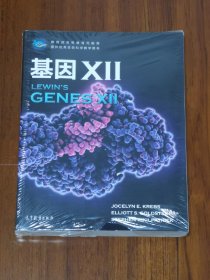
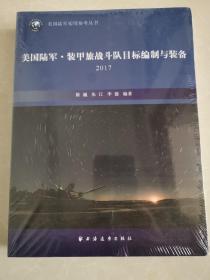
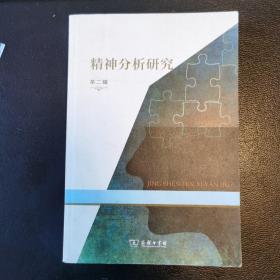
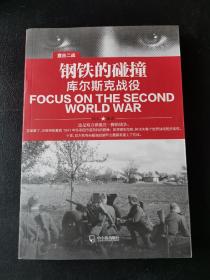
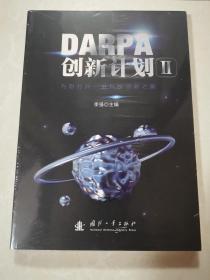


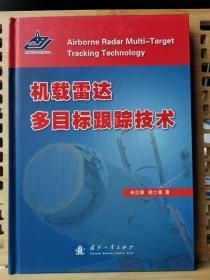
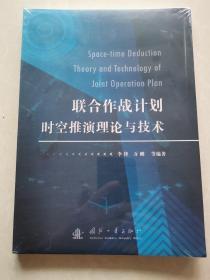










以下为对购买帮助不大的评价